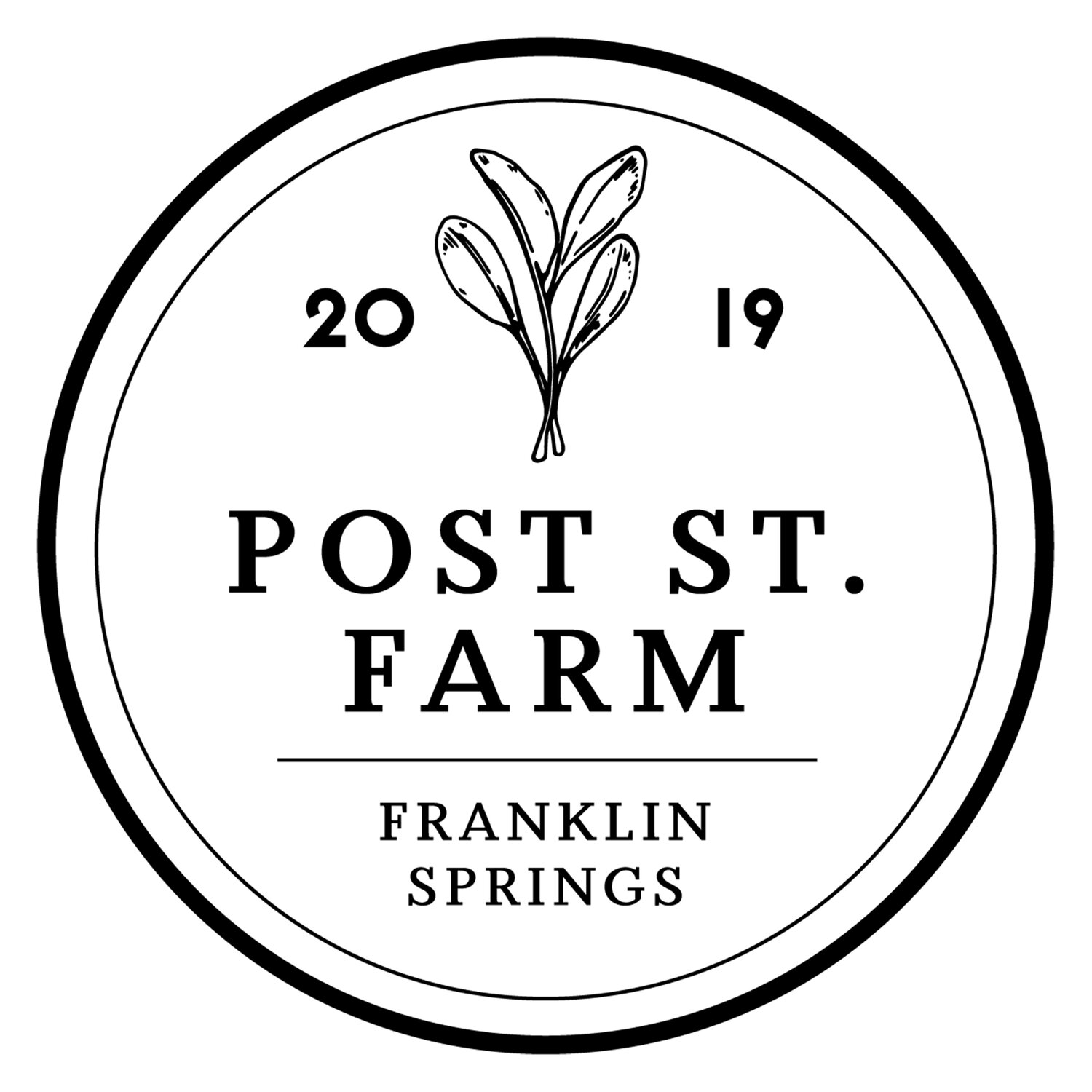When Life Gives You Radish
A view of our winter radish beds
The watermelon radish has been on the wish list of things to grow for a while now. It's a neat root vegetable; round, sweet, super versatile in the kitchen and, most notably, they look cool—white skin with a pink, meaty center. Its cross section, when sliced at the equator, looks a lot like a hamster-sized watermelon slice. Consequently: the watermelon radish. A mature watermelon radish is twice the size of a standard salad radish and it stores well in the cooler. A perfect fall crop. We've actually had customers request for us to grow them.
This year we decided to give it a shot.
Back in late August, we direct-seeded three beds of them. The beds were 50 feet long and there were three rows of radish in each of them. Spaced at about four inches on the row, that would round out to about 1,400 watermelon radish between all three beds. The plan was to sell some radishes fresh with the greens on them and store the rest to sell throughout the winter.
The radish seedlings started out great. We timed the planting ahead of a good rain and got near perfect germination. Radish is tried-and-true like that. Consistent sprouts and fast. It's a sprinter from start to finish and a welcomed crop for the impatient gardener.
I didn't notice any trouble with these radish beds until I went to cultivate between the rows. The beds were all covered by one large floating row cover to help prevent the flea beetles from getting to the greens, especially in their young, tender state. The row cover is a pain to remove and put back. As a result the cover stays on unless absolutely necessary. And through the cover it's hard to get a good look and what's happening underneath. You can tell things are growing, but you can't make out details.
When I moved the cover to get in with the cultivator I got a closer look. These were not large, white globes promising a watermelony center. They were a pale red, long and narrow. Initially, I suspected a growing error but the plants seemed healthy. Just wrong. When I pulled one and cut into it, the center was white. Sweet tasting, then spicy at the end. Hmmm.
A closeup on the mystery radishes
I got in touch with the seed company. They agreed with me that it was definitely not a watermelon radish, though they couldn't say with certainty what type of radish it was at that stage. I checked through the rest of the rows and found more of the same. But I also found a lot that were different. Some big, some small, round, long, pink, purple, red... This was a radish melting pot.
I double-checked the seed packet label but it was right. Could the seeder have had seeds left in it from a previous planting? No, not that many of them anyway. The sales rep at the seed company (a proven reliable source for us) guessed it was a mixup on their end. My guess is the seed we planted was some kind of radish variety blend. They offered to refund the order. It was less than $10.
This of course doesn't cover it. It doesn't cover the cost of the row cover that protected the young plants, the wire hoops to hold it up, the amendments added to the bed ahead of seeding, or the work that went into the bed prep. More importantly, it doesn't cover the cost of time lost. Those beds were occupied for many weeks, taking up space that would otherwise be for other, profitable crops. When you're farming like us, working with limited bed space, when your farm goal and crop plan is based on maximum capacity, time plus space equals profit loss.
In short: $10 is not enough.
My response to the extravagantly apologetic seed company was, paraphrased: "All good." We've never had issues with this company in the past and I'd be willing to bet this was a one-and-done situation. And the truth is that everyone makes mistakes. Farming, we make a lot of mistakes. Constantly. Things happen and you've got to shake them off.
At the end of the day, our problem is: we have radishes. Not the right radishes, but we have something. We're still trying to sort out what varieties we have and how many—and I did even find some actual watermelon radishes in the mix. But for now, we're selling them as an assorted radish bunch, a colorful blended bouquet for the radish lover.
The ones I have tasted so far have been juicy, sweet and packed with that fresh crisp radishes deliver best. They're good. All good.
—John




